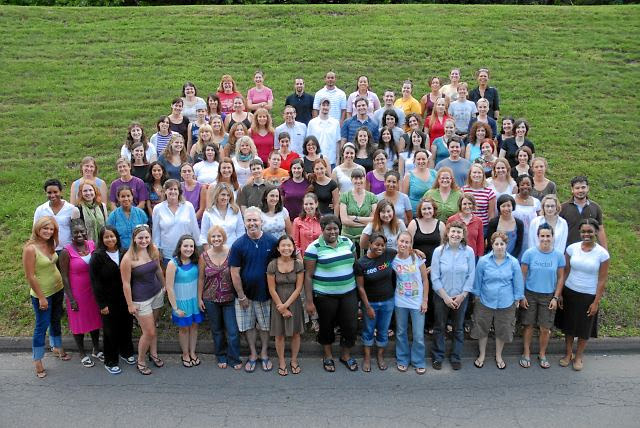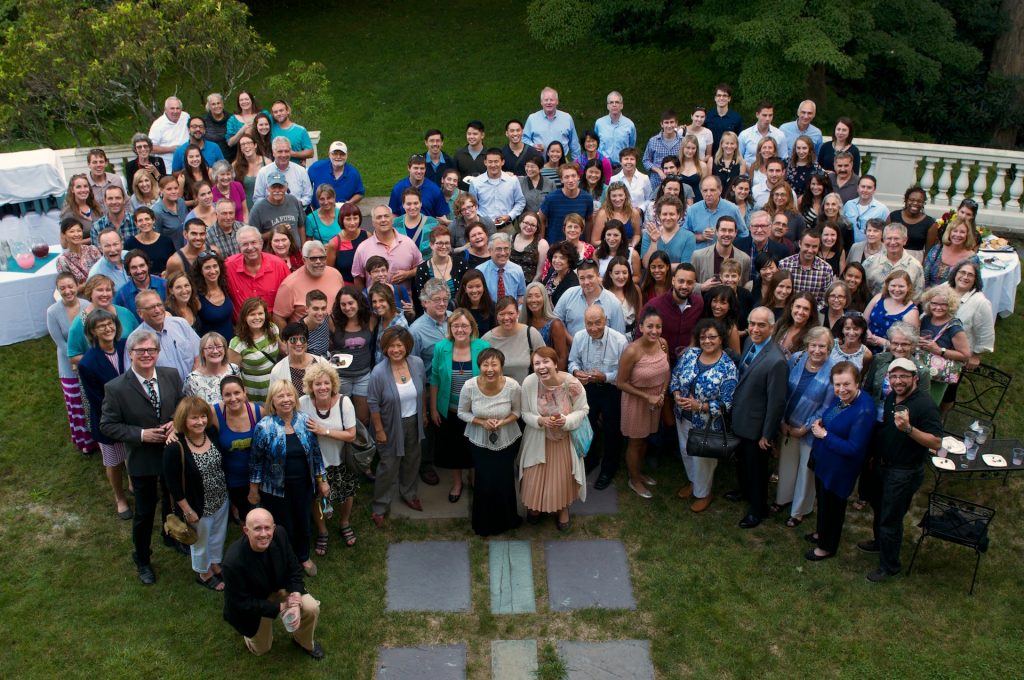[et_pb_section bb_built=”1″ admin_label=”section” background_image=”https://sites.smith.edu/ssw100-history/wp-content/uploads/sites/256/2018/05/2008-Class-SSW-Office.jpg” background_color=”rgba(0,62,81,0.55)” parallax_method=”off” next_background_color=”#ffffff” custom_padding_tablet=”50px|0|50px|0″ custom_padding_last_edited=”on|desktop” _builder_version=”3.2.2″ background_blend=”overlay” module_class=”blue”][et_pb_row admin_label=”row” background_position=”top_left” background_repeat=”repeat” background_size=”initial”][et_pb_column type=”1_3″][/et_pb_column][et_pb_column type=”2_3″][et_pb_divider color=”#ffffff” show_divider=”off” height=”200″ divider_style=”solid” divider_position=”top” hide_on_mobile=”on” disabled_on=”on|on|off” _builder_version=”3.2.2″ /][et_pb_post_title _builder_version=”3.2.2″ meta=”off” featured_image=”off” text_color=”light” title_font_size=”50px” title_line_height=”1.2em” /][/et_pb_column][/et_pb_row][/et_pb_section][et_pb_section bb_built=”1″ specialty=”off” parallax_method=”off” prev_background_color=”rgba(0,62,81,0.55)” custom_padding_tablet=”50px|0|50px|0″ custom_padding_last_edited=”on|desktop” _builder_version=”3.2.2″][et_pb_row admin_label=”row” make_fullwidth=”off” use_custom_width=”off” width_unit=”on” use_custom_gutter=”off” custom_padding=”0px|||” padding_mobile=”on” allow_player_pause=”off” parallax=”off” parallax_method=”off” make_equal=”off” parallax_1=”off” parallax_method_1=”off” parallax_2=”off” parallax_method_2=”off” column_padding_mobile=”on” background_position=”top_left” background_repeat=”repeat” background_size=”initial”][et_pb_column type=”1_3″][et_pb_post_title admin_label=”Categories” _builder_version=”3.2.2″ title=”off” author=”off” date=”off” comments=”off” featured_image=”off” meta_text_color=”#6fbee5″ /][et_pb_code admin_label=”Tags” _builder_version=”3.2.2″][tags][/et_pb_code][/et_pb_column][et_pb_column type=”2_3″][et_pb_text max_width=”620px” text_font_size=”20″ text_text_color=”#363636″ use_border_color=”off” custom_margin=”10px||0px|” text_line_height=”1.4em” text_font_size_last_edited=”on|desktop” background_position=”top_left” background_repeat=”repeat” background_size=”initial” _builder_version=”3.2.2″]
Several times since SSW committed itself to becoming anti-racist, students have explored all aspects of that commitment in their thesis writing. Below you will find the abstracts of some of these theses and links to the full texts.
[/et_pb_text][/et_pb_column][/et_pb_row][et_pb_row make_fullwidth=”off” use_custom_width=”off” width_unit=”on” use_custom_gutter=”off” custom_padding=”50px|||” padding_mobile=”on” allow_player_pause=”off” parallax=”off” parallax_method=”off” make_equal=”off” parallax_1=”off” parallax_method_1=”off” column_padding_mobile=”on” custom_padding_tablet=”17px|||” custom_padding_last_edited=”on|tablet” background_position=”top_left” background_repeat=”repeat” background_size=”initial”][et_pb_column type=”1_4″][et_pb_text _builder_version=”3.2.2″]

[/et_pb_text][/et_pb_column][et_pb_column type=”3_4″][et_pb_text admin_label=”Joanna Garcia Vaughn” _builder_version=”3.2.2″ text_font_size=”20px” text_font_size_phone=”14″ text_font_size_last_edited=”on|phone”]
[/et_pb_text][et_pb_text admin_label=”Joanna Garcia Vaughn” _builder_version=”3.2.2″ text_font_size_phone=”12px” text_font_size_last_edited=”on|phone”]
ABSTRACT
This research study was undertaken to examine the organizational changes involved in the establishment of the Smith College School for Social Work’s commitment to anti-racism during the years 1993 – 1998 in order to establish a chronology of the changes and to collect community members’ reflections on the process. The retrospective case study involved interviews with 12 community members –faculty, staff, and alumni – who were present at the School between the years 1993 –1998 and who were involved in some aspect of the changes. The members were interviewed about their involvement in the changes, their recollections of the changes, and their reflections on the changes. In addition to interviews, School documents were reviewed, including the Meeting Minutes of the Anti-Racism Task Force, in order to establish the chronology of the changes.
The findings are presented in two parts. Firstly, the data are organized into a chronology of the major events, interspersed with commentary from participant interviews regarding these events. Secondly, participant recollections are organized into five major themes regarding the processes of change that occurred. This study contributes to the literature regarding multicultural organizational development and methods of addressing institutional racism in higher education, and is hoped to be a contribution to the Smith College School for Social Work, as it provides an additional study of the changes that are inextricable from the School’s current mission.
[/et_pb_text][/et_pb_column][/et_pb_row][et_pb_row admin_label=”row” make_fullwidth=”off” use_custom_width=”off” width_unit=”on” use_custom_gutter=”off” custom_padding=”0px|||” padding_mobile=”on” allow_player_pause=”off” parallax=”off” parallax_method=”off” make_equal=”off” parallax_1=”off” parallax_method_1=”off” parallax_2=”off” parallax_method_2=”off” column_padding_mobile=”on” background_position=”top_left” background_repeat=”repeat” background_size=”initial” _builder_version=”3.2.2″][et_pb_column type=”1_4″][/et_pb_column][et_pb_column type=”3_4″][et_pb_text admin_label=”Julia Kraft Perault, 2009″ text_font_size=”20″ text_text_color=”#363636″ use_border_color=”off” custom_margin=”30px||0px|” text_font_size_last_edited=”on|phone” background_position=”top_left” background_repeat=”repeat” background_size=”initial” _builder_version=”3.2.2″ text_font_size_phone=”14″]
[/et_pb_text][et_pb_text admin_label=”Julia Kraft Perault, 2009″ text_text_color=”#363636″ use_border_color=”off” custom_margin=”30px||0px|” text_font_size_last_edited=”on|phone” background_position=”top_left” background_repeat=”repeat” background_size=”initial” _builder_version=”3.2.2″ text_font_size_phone=”12″]
ABSTRACT
This mixed method survey study explored Smith College School for Social Work (SCSSW) students’ experiences in talking with field supervisors about issues of race. Increased racial and ethnic diversity in the United States calls for attention to issues of race in social work education and practice. The SCSSW shares with major social work organizations its commitment to anti-racism. Field supervision is an integral component of the SCSSW social work curriculum and represents an arena in which students can incorporate anti-racism learning into practice. A dearth of social work conceptual and empirical literature examines racial dialogues in field supervision from the perspectives of social work master’s students.
The researcher hypothesized that students’ year in graduate school and amount of completed graduate coursework and training in issues of race influenced students’ comfort talking with supervisors about issues of race. Open-ended questions inquired into students’ perceptions of the factors influencing racial dialogues in supervision. This study surveyed 84 SCSSW master’s students during their practicum placements. While the study sample was representative across gender and age of the SCSSW student population and social work graduate programs nationwide, students of color were underrepresented in this sample. In spite of this major limitation, the findings demonstrated the importance of an open and safe relationship with a supervisor, who has developed the racial awareness necessary to initiate and explore issues of race in depth with the student. These findings are significant given the dearth of current knowledge on SCSSW students’ experiences incorporating anti-racism learning into field practice through racial dialogues with field supervisors. Findings have implications for social work education, training, practice and policy.
[/et_pb_text][/et_pb_column][/et_pb_row][et_pb_row admin_label=”row” make_fullwidth=”off” use_custom_width=”off” width_unit=”on” use_custom_gutter=”off” custom_padding=”17px|||” padding_mobile=”on” allow_player_pause=”off” parallax=”off” parallax_method=”off” make_equal=”off” parallax_1=”off” parallax_method_1=”off” parallax_2=”off” parallax_method_2=”off” column_padding_mobile=”on” background_position=”top_left” background_repeat=”repeat” background_size=”initial”][et_pb_column type=”1_4″][/et_pb_column][et_pb_column type=”3_4″][et_pb_text admin_label=”Charlotte Cromley Curtis, 2010″ text_text_color=”#363636″ use_border_color=”off” custom_margin=”30px||0px|” text_font_size_last_edited=”on|desktop” background_position=”top_left” background_repeat=”repeat” background_size=”initial” _builder_version=”3.2.2″ text_font_size=”20″]
[/et_pb_text][et_pb_text admin_label=”Charlotte Cromley Curtis, 2010″ text_text_color=”#363636″ use_border_color=”off” custom_margin=”30px||0px|” text_font_size_last_edited=”on|tablet” background_position=”top_left” background_repeat=”repeat” background_size=”initial” _builder_version=”3.2.2″ text_font_size_phone=”12″]
ABSTRACT
This study was undertaken to investigate the ongoing impact of an explicit antiracism mission on white graduates of the Smith College School for Social Work (SSW) and to determine which elements of the anti-racism experience are most salient. Specifically, which salient experiences influence white graduates in continuing to engage in anti-racism work in the field of social work. Data was gathered from 85 white participants who completed the MSW program between 1994 and 2009. An online survey instrument was used to gather quantitative and qualitative data on participants’ attitudes and behaviors related to anti-racism and their recollections of the program as it influenced their learning about racism and whiteness. Significant findings are presented. The most notable finding is that all participants underwent some change or transformation in attitudes and behaviors due to the anti-racism experience, although to varying degrees. Affective consequences of anti-racism pedagogy and the crucial role that professors play in these processes are discussed. Recommendations derived from participants’ responses are put forth.
[/et_pb_text][/et_pb_column][/et_pb_row][et_pb_row admin_label=”row” make_fullwidth=”off” use_custom_width=”off” width_unit=”on” use_custom_gutter=”off” custom_padding=”17px|||” padding_mobile=”on” allow_player_pause=”off” parallax=”off” parallax_method=”off” make_equal=”off” parallax_1=”off” parallax_method_1=”off” parallax_2=”off” parallax_method_2=”off” column_padding_mobile=”on” background_position=”top_left” background_repeat=”repeat” background_size=”initial”][et_pb_column type=”1_4″][/et_pb_column][et_pb_column type=”3_4″][et_pb_text admin_label=”Malcolm R. Pradia, 2013″ text_font_size=”20″ text_text_color=”#363636″ use_border_color=”off” custom_margin=”30px||0px|” text_font_size_last_edited=”on|desktop” background_position=”top_left” background_repeat=”repeat” background_size=”initial” _builder_version=”3.2.2″ text_font_size_phone=”14″]
[/et_pb_text][et_pb_text admin_label=”Malcolm R. Pradia, 2013″ text_text_color=”#363636″ use_border_color=”off” custom_margin=”30px||0px|” text_font_size_last_edited=”on|desktop” background_position=”top_left” background_repeat=”repeat” background_size=”initial” _builder_version=”3.2.2″ text_font_size_phone=”12″]
ABSTRACT
The literature confirms the importance of providing cross-cultural education and the development of cross-cultural skills for trainees entering clinical practice. In recognition of this, Smith College School for Social Work has a written commitment to anti-racism and as part of this commitment the college has developed a curriculum that addresses race and racism in clinical practice and the social work profession. Given this commitment, this study surveyed twelve white Smith College School for Social Work students to understand if white Smith students were addressing race and racism with clients of color in clinical practice, why or why not, and if so, how they were doing it. Results showed that the majority of white Smith students were addressing race and racism with clients of color, and while the majority surveyed could identify skills and techniques to address race, the majority were doing so inconsistently. Results further indicated that when race was addressed, it was the client’s race and not the clinician’s race. These findings are discussed and their educational implications raised. Keywords: race, racism, multi-cultural competency, racial color-blindedness.
[/et_pb_text][/et_pb_column][/et_pb_row][et_pb_row admin_label=”row” make_fullwidth=”off” use_custom_width=”off” width_unit=”on” use_custom_gutter=”off” custom_padding=”17px|||” padding_mobile=”on” allow_player_pause=”off” parallax=”off” parallax_method=”off” make_equal=”off” parallax_1=”off” parallax_method_1=”off” parallax_2=”off” parallax_method_2=”off” column_padding_mobile=”on” background_position=”top_left” background_repeat=”repeat” background_size=”initial”][et_pb_column type=”1_4″][et_pb_text admin_label=”Class of 2014 picture” _builder_version=”3.2.2″]

[/et_pb_text][/et_pb_column][et_pb_column type=”3_4″][et_pb_text admin_label=”Kaitlin Forman Executive Summary 2015″ text_font_size=”20″ text_text_color=”#363636″ use_border_color=”off” custom_margin=”30px||0px|” text_font_size_last_edited=”on|desktop” background_position=”top_left” background_repeat=”repeat” background_size=”initial” _builder_version=”3.2.2″ text_font_size_phone=”14″]
2014-2015 Anti-Racism MSW Theses
[/et_pb_text][et_pb_text admin_label=”Kaitlin Forman Executive Summary 2015″ text_text_color=”#363636″ use_border_color=”off” custom_margin=”30px||0px|” text_font_size_last_edited=”on|desktop” background_position=”top_left” background_repeat=”repeat” background_size=”initial” _builder_version=”3.2.2″ text_font_size_phone=”12″]
In anticipation of the 20th anniversary of Smith College School for Social Work’s AntiRacism Commitment [ARC], the School commissioned a set of research projects to look back upon and examine how the commitment has evolved over time, and its felt impact on the School’s curriculum, faculty, students, and alumni. First, the resident faculty, through a series of internal discussions, broadly identified topic areas they considered important to examine. MSW and doctorate students were then given the opportunity to narrow the focus further to topics most salient for them. Six MSW students were selected to conduct studies from the final list of topics as individual theses under faculty supervision during the 2014-2015 academic year. The intent: Examine the School’s efforts in upholding its now twenty year commitment to “becoming an anti-racism institution” and offer recommendations to further the process (Smith, 2011).
The Executive Summary of the reports appears below, after the titles of the six individual theses that made up the project.
[/et_pb_text][et_pb_text admin_label=”Kaitlin Forman Executive Summary 2015″ text_text_color=”#363636″ use_border_color=”off” custom_margin=”30px||0px|” text_font_size_last_edited=”on|phone” background_position=”top_left” background_repeat=”repeat” background_size=”initial” _builder_version=”3.2.2″ text_font_size_phone=”14″ text_font_size=”20″]
Megan Foster, “The Perennial Blessing: An Exploratory Study of the Influence of Smith College School for Social Work’s Anti-Racism Commitment”
Nina Gonzalez, “Survey on Smith College School for Social Work’s Anti-Racism Commitment”
Hannah Mason, “Alumni of Color’s Perceptions about the Smith College School for Social Work Anti-Racism Commitment: Examining Twenty Years since its Adoption”
Katie Forman, “Smith College School for Social Work’s required MSW curricula and the School’s Anti-Racism Commitment: A Qualitative Content Analysis”
Jennifer Budhan, “An Examination of Smith’s Anti-Racism Commitment: Twenty years of the Anti-Racism Field Assignment”
Eve Wesson, “The Work Towards being an Anti-Racist institution: A Qualitative Content Analysis of Smith College School for Social Work’s Progress Reports”
[/et_pb_text][et_pb_text _builder_version=”3.2.2″]
[/et_pb_text][/et_pb_column][/et_pb_row][/et_pb_section]